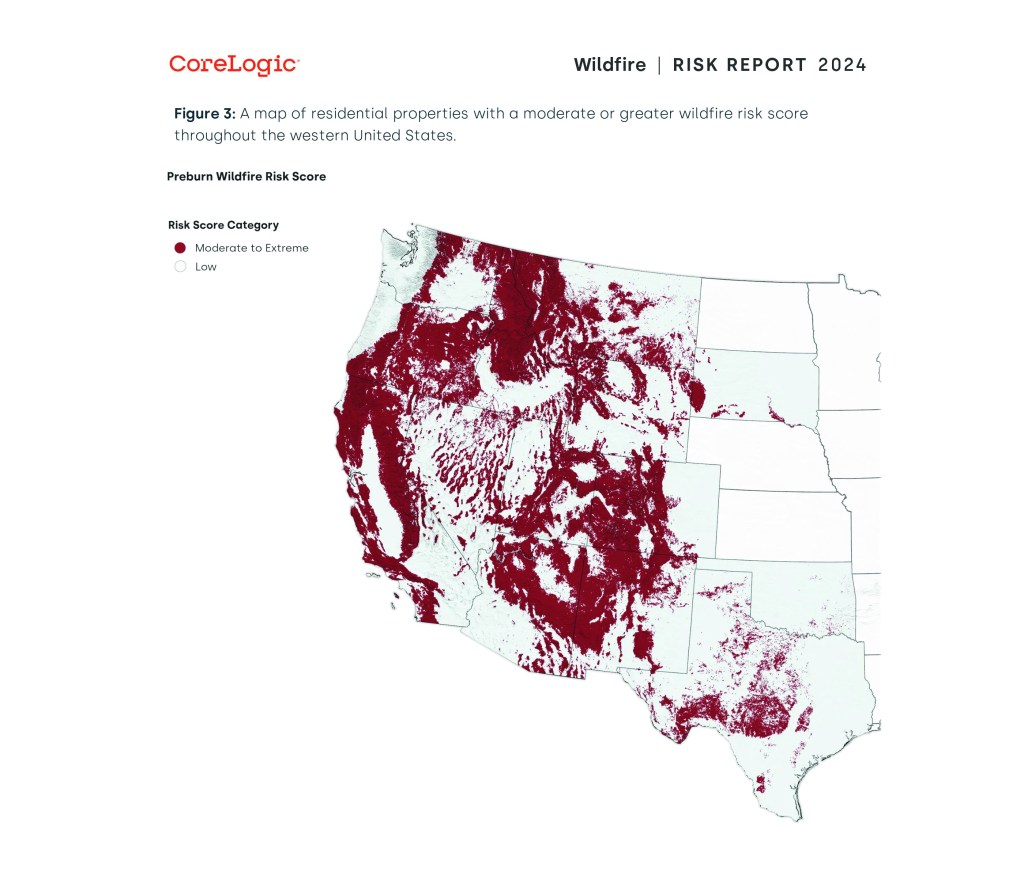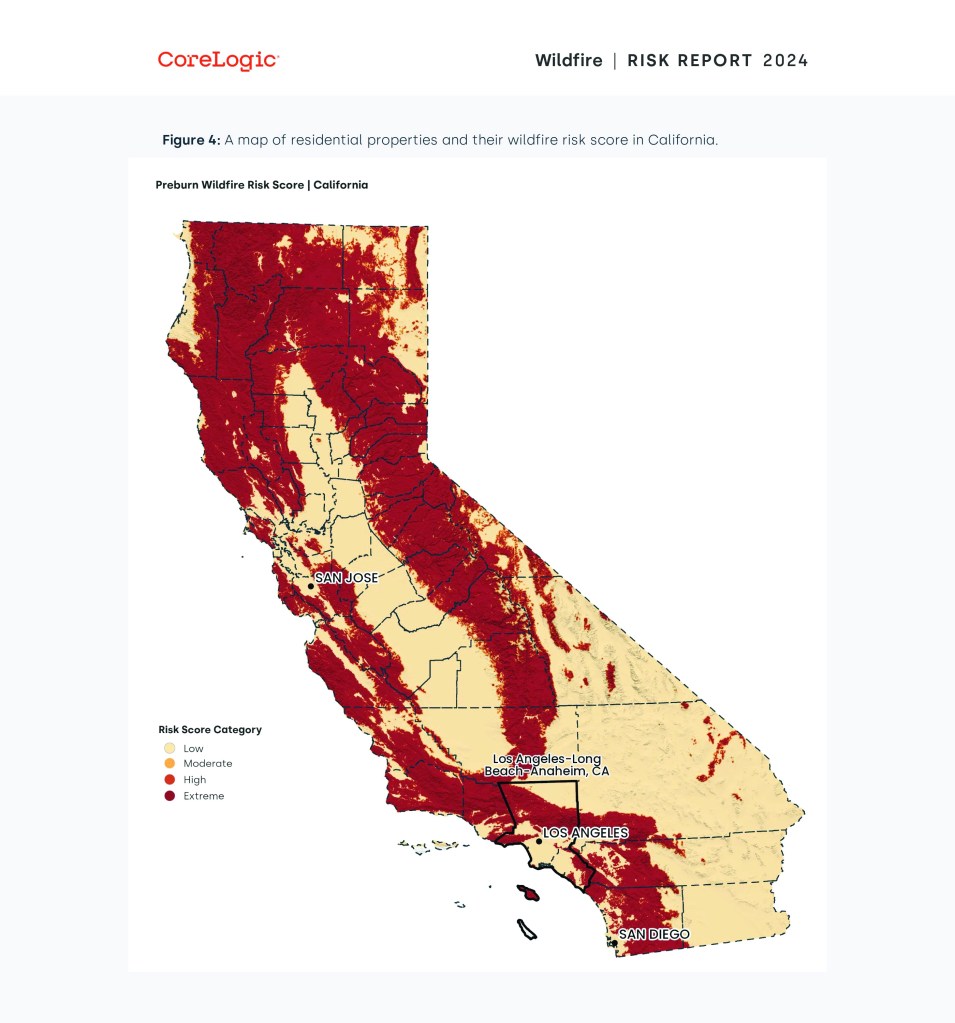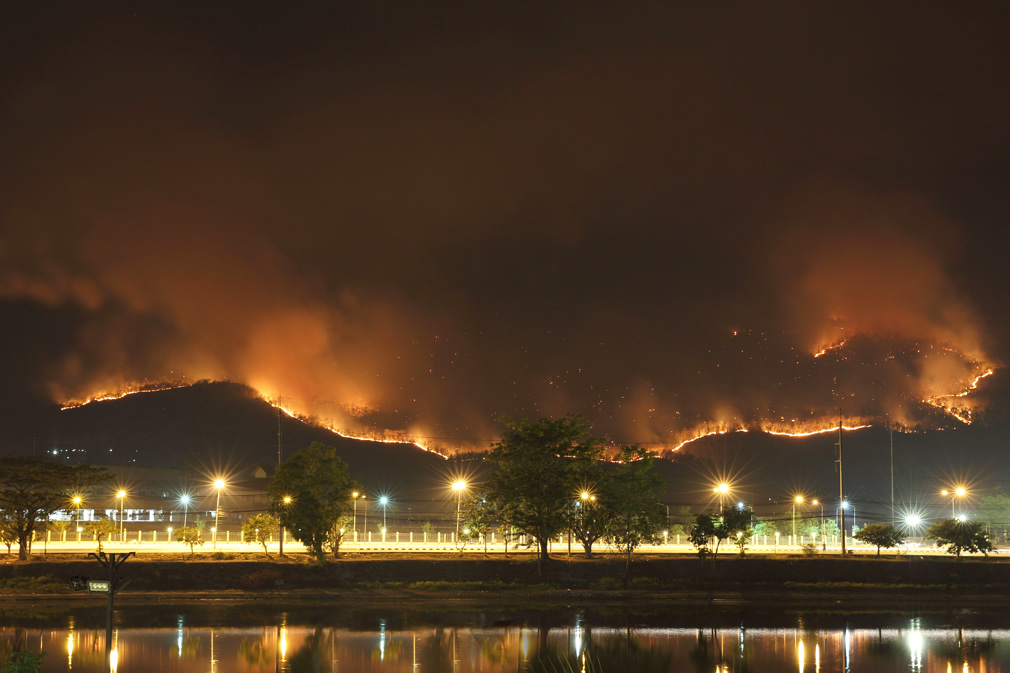Climate change has supercharged wildfires in high-risk areas across the country, and the impacts on housing could be catastrophic.
A new report from CoreLogic found that 2.6 million homes across 14 western states are at risk from wildfires. California is by far the state with the most homes in danger at 1,258,748, followed by Colorado (321,294) and Texas (244,617).
In 2022, Zillow estimated that the U.S. had a 4.5 million shortage of homes. For a nation already struggling with an acute shortage of housing, homes lost to wildfires will undoubtedly set back efforts to close the gap.

“In recent years, we’ve seen wildfires occur in unexpected places, reinforcing the need to understand the risk landscape and take mitigation action,” Jon Schneyer, CoreLogic’s director of catastrophe response, said in a statement. “Both insurers and consumers have a role to play to ensure adequate protection. These numbers may seem overwhelming, but research shows that mitigation efforts make a real difference in potential losses from wildfires. The good news is there are actions people can take to lessen the risk.”
Breaking down the numbers at the metropolitan level underscores how destructive wildfires have become in California. Of the 15 U.S. cities with the highest levels of risk, 10 are in California.
The Southern California cities of Los Angeles, Riverside, San Diego and Santa Barbara combine for 595,129 at-risk homes. The Bay Area cities of Sacramento, San Francisco and Santa Rosa combine for 223,374 homes. Together, these two areas represent 31.4% of the total number of homes at risk of wildfire damage.

Rising insurance costs have hammered homeowners in areas exposed to climate change risks, including wildfires. But CoreLogic said that regulatory changes can help to better cover homeowners these areas.
The report uses California as an example, highlighting a new policy passed in June by the California Department of Insurance. It allows insurers to use catastrophe models in setting rates if they increase policy writing in areas at high risk.
Competition among insurers is still higher in areas with a low risk of wildfires and lower in high-risk areas. But CoreLogic’s probability model indicates that a wildfire that causes $15 billion in insurance losses — like the devastating 2018 wildfire that destroyed 90% of the city of Paradise, California — has only a 2% probability of happening in any given year.
CoreLogic recommends that homeowners use mitigation measures to lower the risk of their property being consumed by wildfire. These include creating a buffer between the home and vegetation, using highly rated roofs and metal gutters, and keeping tree debris, firewood and propane tanks at least 30 feet away from the home.
The report said that if homeowners in Paradise had taken these measures before the fire, the aggregate loss could have been decreased by 53%. Similar measures at the community level would have reduced expected losses by 15%. Safety measures taken at both the homeowner and community levels would combine for a 75% reduction in expected loss per property.





